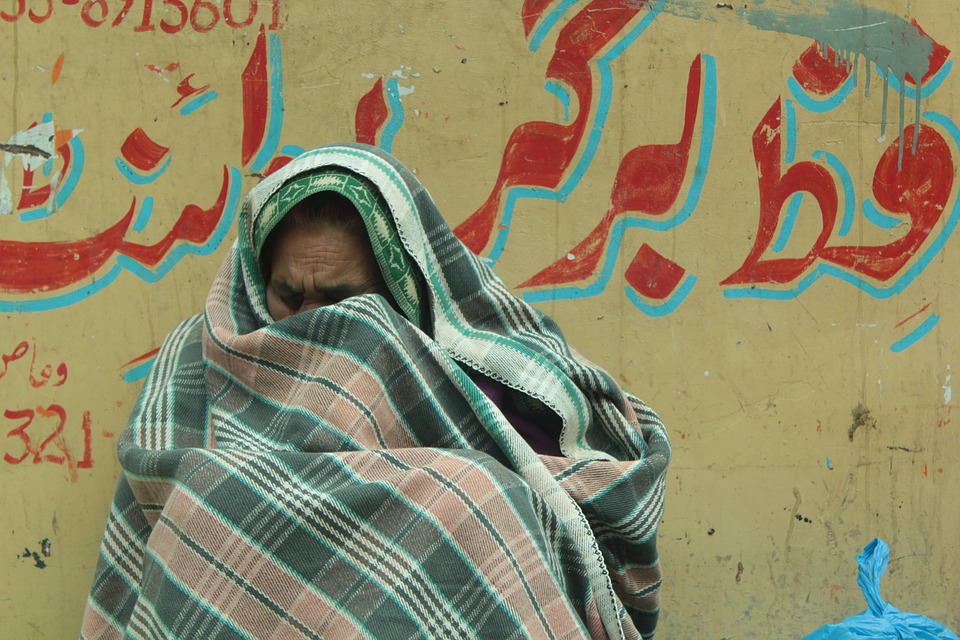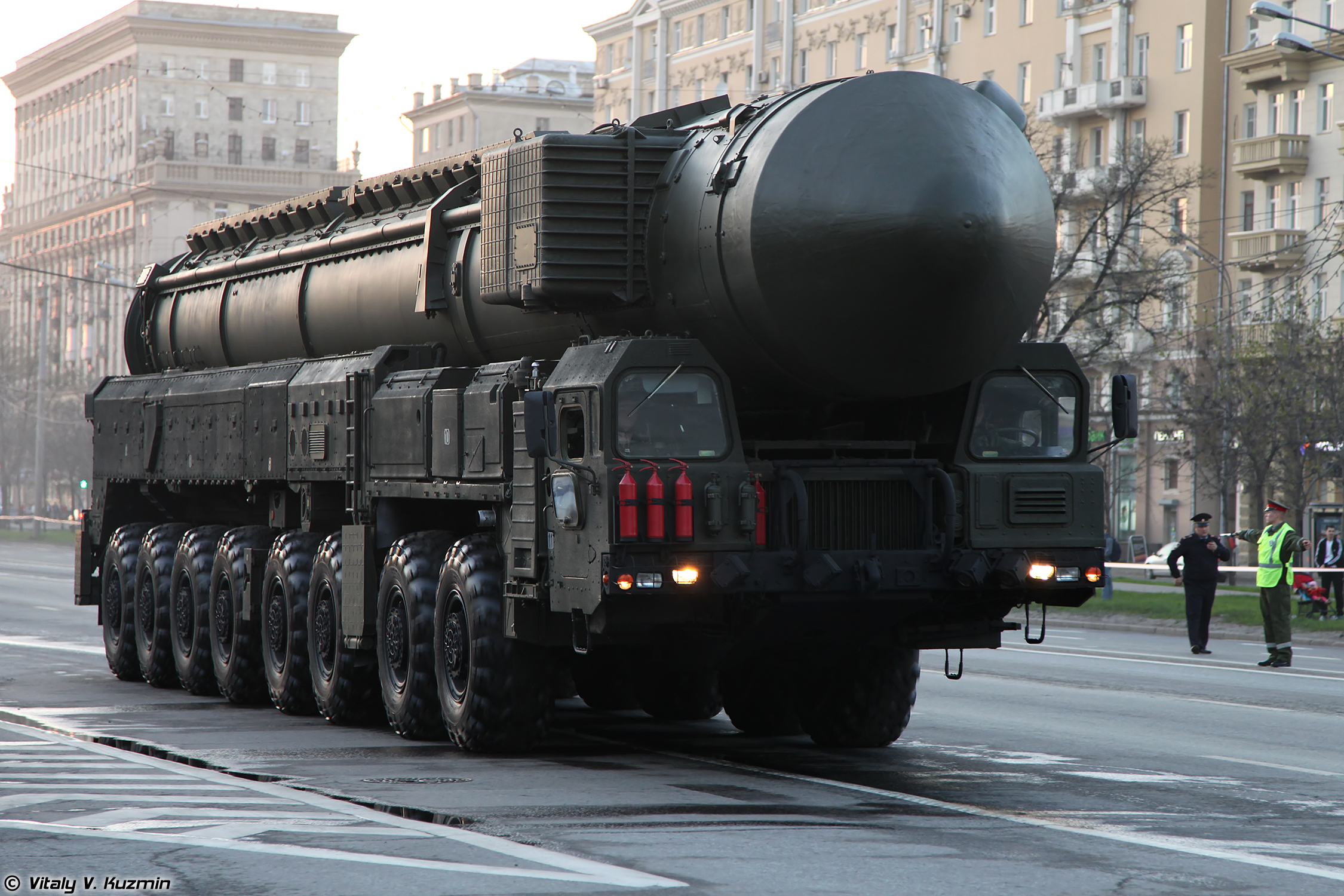By: Mackenzie Rice*
The Central Mediterranean Sea has become one of the most infamous migration routes, both for its popularity and its fatality rate. Typically, those who travel across the Central Mediterranean Sea depart from the North African coast in Libya and hope to arrive on the Italian shores of Lampedusa or Sicily.[i] In 2016, arrivals in Italy reached a new high of 181,436 people, while 4,581 others died in transit, marking 2016 the deadliest year to date for migrants in the Central Mediterranean Sea.[ii] This prompted the European Political Strategy Center of the European Commission to draft recommendations for short-term and long-term policy solutions to the crisis.[iii] Following from these recommendations, Italy and the European Union (EU) implemented new policies in July and August of 2017 that aimed at reducing the number of migrants crossing Central Mediterranean Sea. The bedrock of Europe’s new strategy was to develop a working relationship with Libyan authorities to stop the flow of irregular migrants by providing funding and tactical support. As a result of these policies, Italy experienced a dramatic decrease in the number of migrant arrivals in the months of July and August. Across Europe, the new strategies were applauded for their effectiveness at both reducing the number of migrant arrivals, as well as the number of lives lost en route across the Central Mediterranean. However, a closer examination of these celebrated policies reveals Europe’s prioritization of border security at the expense of the safety and inherent human rights of vulnerable migrant populations.
The recommendations made by the European Commission in February 2017 included a suggestion that the EU and individual Member States provide support to the Libyan Coast Guard to secure Libyan coastal regions and reduce the flow of migrants across the Central Mediterranean Sea.[iv] Although the Commission’s report noted concerns about the potential efficacy of such policies due the unstable political climate in Libya that has endured since the fall of the Gaddafi regime in 2011, the Italian government and the European Commission adopted a modified version of these recommendations in July and early August.[v] On July 4th, 2017, the European Commission released the Action Plan on Measures to Support Italy, which designated approximately 46 million euros to the cause of managing migration flows in the Central Mediterranean Sea. [vi] The most notable program funded by the Action Plan is an operation coordinated by the Italian Ministry of Interior to support and train Libyan Border and Coastguard Units to better manage the country’s land and coastal borders.[vii] Furthermore, the Italian government passed a code of conduct for NGOs operating in the Mediterranean Sea. This code of conduct included a ban on NGO vessels from entering Libyan waters, a ban on NGOs making phone calls to assist migrant departures, and a requirement that all NGO vessels must allow law enforcement officers aboard to monitor the organization’s activities.[viii] In addition, on August 2nd, 2017, the Italian government announced that they would deploy two military ships to Libya to assist the Libyan government in their attempts to monitor and reduce irregular migration and the activity of human smugglers.[ix]
As previously noted, the impacts of these policies have been striking. While the number of migrants arriving in Italy in the first three months of 2017 was 30% higher than the number of migrants in 2016, arrivals sharply declined following the implementation of the new policies by the European Commission and the Italian government in July and August.[x] The number of migrants that arrived in Italy in July was less than half of the number that landed in the country in July 2016, with a decline of 80% estimated for August.[xi] The recent changes implemented by the Italian government and the European Commission with regard to the crisis in the Central Mediterranean Sea have amassed great support across Europe, with policymakers and political commentators citing the decline in the number of irregular migrant arrivals in Italy as an indication of the success of the new policies. The argument in favor of these newly implemented policies is that the decline in the number of migrants arriving in Italy signifies a reduction in the flow of irregular migration between Libya and Italy, which will have the effect of decreasing the number migrant deaths in the Central Mediterranean.[xii] However, these policies have had serious consequences for migrant populations that are far from commendable and have been denounced by global humanitarian organizations working in the region.
One of the primary concerns with the new European policies in the Central Mediterranean Sea is that they place a great deal of control in the hands of Libyan authorities, who are not in a position to guarantee the ethical management of migration flows and ensure compliance to international law. Arguably the most volatile elements of the political landscape in Libya is the competition between the UN supported Government for National Accord and the self-proclaimed militia government named the General National Congress for control of Libyan politics and territory.[xiii] These two competing government entities along with the rising influence of the secular Libyan National Army has created an unregulated political and legal environment in Libya, ripe for the exploitation of vulnerable migrant populations by human traffickers and militia groups. In what has become a notable controversy, The New York Times and The Economist reported on claims that suggested that the UN-backed Libyan government made deals with local militia groups to supply them with funding and resources in exchange for preventing migrants from embarking on the trip across the Central Mediterranean by holding them captive and locking them in detention centers.[xiv] The Italian government, rumored to have supported the deal, fervently denied those claims, however the recent developments in Libya denote the dangers of charging authorities in situations of extreme instability with the responsibility of managing a humanitarian crisis.[xv] This controversy is the first indication of Europe’s disregard for the dire consequences that the new policies have had on vulnerable migrant populations.
Additionally, the treatment of migrants intercepted by both government-hired militias and the EU-trained Libyan Coast Guard units is in grave violation of the individuals’ human rights and dignities. While European nations may be celebrating a recent decline in the number of irregular migrants arriving in Italy from Libya, these trends are matched by an increase in migrants who are being held in Libyan detention centers where abuse, rape, and torture are commonplace.[xvi] The most prominent group to speak out about the conditions inside the Libyan detention centers is the humanitarian group Doctors Without Borders (MSF).[xvii] Most recently, on September 7th MSF President Joanne Liu wrote an open letter to European leaders condemning their practice of returning rescued migrants to detention centers in Libya and accused the policies of the EU of funding the criminal abuse of vulnerable migrants that takes place in Libya. [xviii] The United Nations has also cited the inhuman conditions of the Libyan detention centers, and documented a “widespread pattern of guards beating, humiliating and extorting migrants.”[xix] These conditions violate Article 9 of the 1976 International Covenant on Civil and Political Rights (ICCPR), which guarantees individuals the rights to liberty, security of person, and freedom from arbitrary arrest and detention.[xx] In addition, the state of Libyan migrant detention centers violates Article 7 of the ICCPR, which states, “no one shall be subjected to torture or to cruel, inhuman or degrading treatment or punishment.”[xxi]
Moreover, the practice of intercepting and returning migrants attempting to cross the Central Mediterranean Sea to detention centers in Libya is likely to be in violation of international laws regarding the rights of refugees and asylum seekers. While the majority of people that travel the Central Mediterranean Sea are economic migrants, a significant minority are in fact refugees and asylum seekers. [xxii] Approximately 40% of the people who filed asylum claims after landing in Italy qualify for humanitarian protection.[xxiii] One of the most recent developments in the Central Mediterranean has included plans to obstruct or block common routes for human traffickers, with the hope that these efforts would decrease the number of migrants willing to take on the treacherous journey. However, as it is impossible to identify migrants from asylum seekers or refugees, these policies would involve the return of some people fleeing persecution to detention centers in Libya, thus violating their right to seek asylum, as guaranteed by Article 14 of the Universal Declaration of Human Rights.[xxiv]Furthermore, the 1951 Convention Relating to the Status of Refugees prohibits the return of refugees to locations where they will face persecution, a practice known as refoulement.[xxv]Due to the fact that some of the people who are intercepted and returned to Libyan detention centers are refugees, some even fleeing persecution within Libya, the actions of the EU-backed Libyan Coast Guard units and government-hired militias are without respect for international law that protects the rights of refugees and asylum seekers.
Lastly, the increasingly hostile environment in the Central Mediterranean Sea has caused some NGOs to pull their resources out of the area due to security concerns arising from threats made by the Libyan Coast Guard, which receives funding, training, and tactical support from the Italian government.[xxvi] Doctors Without Borders is one such organization that recently suspended their search and rescue efforts in the region. These humanitarian organizations have had an immense impact on the safety of migrants crossing the Mediterranean Sea, accounting for nearly one quarter of all rescue missions conducted in 2016.[xxvii] Doctors Without Borders executive Loris De Filippi released a statement about the dangers of reducing humanitarian efforts in the Mediterranean Sea commenting, “there will be fewer ships ready to aid persons before they drown… and whoever doesn’t drown will be intercepted and brought back to Libya, which we know to be a place of absent legality, arbitrary detention and extreme violence.”[xxviii]
Although the tougher policies implemented by the Italian government and the EU in July and August may have contributed to the decrease in irregular migrants arriving in Italy after traveling through Central Mediterranean Sea, these policies are not cause for celebration. Public officials in Europe often cite a humanitarian benefit to the new policies, claiming that fewer travellers across the Central Mediterranean Sea will lead to a decrease in the number of lives lost en route. However, this argument is negated by the strategy’s lack of regard for human dignity and grave human rights violations. By supporting and permitting Libyan authorities to take on a primary regulatory role in the Central Mediterranean migrant crisis, European nations have placed migrants in dangerous, inhuman conditions and have jeopardized the inherent rights afforded to vulnerable populations by the Universal Declaration of Human Rights and the 1951 Convention Relating to the Status of Refugees. While it is important for nations to consider their own national security and border protection when forming migration policy, these goals should not be met by expressly compromising the life, rights, and dignities of vulnerable populations. In response to reports about the grossly inhuman conditions under which migrants were being held in Libya, Italian policymaker Arturo Scotto called for “an urgent and serious reflection above all in Italy,” with regards to policy in the Central Mediterranean Sea.[xxix]The Italian government and the EU must devise a new plan that will look beyond stopping the short-term effects of migrant arrivals in Italy, and instead pursue a solution that will achieve the stabilization of Europe’s borders while upholding its commitment to international human rights protections.
[i] Rosemary Belson, “Central Mediterranean named most deadly route for migrants,” Politico, September 11, 2017, http://www.politico.eu/article/refugees-central-mediterranean-sea-named-most-deadly-route-for-migrants/.
[ii] European Political Strategy Center, “Irregular Migration via the Central Mediterranean: From Emergency Responses to Systemic Solutions,” European Commission, February 2, 2017, https://ec.europa.eu/epsc/publications/strategic-notes/irregular-migration-central-mediterranean_en.
[iii] Ibid.
[iv] Ibid.
[v] Ibid.; Eliza Mackintosh, “Europe’s migrant crisis isn’t going away, but it is changing,” CNN, August 29, 2017, http://www.cnn.com/2017/08/17/europe/mediterranean-migrant-crisis-2017/index.html.
[vi] European External Action Service Press Team, “EU-Libya Relations,” June 8, 2017, https://eeas.europa.eu/headquarters/headquarters-homepage_en/19163/EU-Libya relations, factsheet.
[vii] European External Action Service Press Team, “EU-Libya Relations,” June 8, 2017, https://eeas.europa.eu/headquarters/headquarters-homepage_en/19163/EU-Libya relations, factsheet.
[viii] Eliza Mackintosh, “Europe’s migrant crisis isn’t going away, but it is changing,” CNN, August 29, 2017, http://www.cnn.com/2017/08/17/europe/mediterranean-migrant-crisis-2017/index.html.
[ix] Kara Fox and Lorenzo D’Agostino, “Italy to deploy naval ships to Libya as migration crisis grows,” CNN, August 2, 2017, http://edition.cnn.com/2017/08/02/europe/italy-to-send-military-ships-to-libya/index.html.
[x] “The number of migrants crossing the Mediterranean keeps rising,” The Economist, April 12, 2017, https://www.economist.com/news/europe/21720663-so-does-risk-death-number-migrants-crossing-mediterranean-keeps-rising.
[xi] “Why are fewer irregular migrants arriving in Italy?” The Economist, August 28, 2017, https://www.economist.com/blogs/economist-explains/2017/08/economist-explains-22.
[xii] Ibid.
[xiii] European Political Strategy Center, “Irregular Migration via the Central Mediterranean: From Emergency Responses to Systemic Solutions,” European Commission, February 2, 2017, https://ec.europa.eu/epsc/publications/strategic-notes/irregular-migration-central-mediterranean_en.
[xiv] Reuters, “Italy Denies Supporting Libyan Traffickers to Stop Migrants,” The New York Times, August 30, 2017, https://www.nytimes.com/reuters/2017/08/30/world/europe/30reuters-europe-migrants-libya-italy.html?_r=0.; “Why are fewer irregular migrants arriving in Italy?” The Economist, August 28, 2017, https://www.economist.com/blogs/economist-explains/2017/08/economist-explains-22.
[xv] Reuters, “Italy Denies Supporting Libyan Traffickers to Stop Migrants,” The New York Times, August 30, 2017, https://www.nytimes.com/reuters/2017/08/30/world/europe/30reuters-europe-migrants-libya-italy.html?_r=0.
[xvi] Associated Press, “Medical Aid Group Slams EU Migrant Policy in Libya,” The New York Times, September 7, 2017, https://www.nytimes.com/aponline/2017/09/07/world/europe/ap-eu-europe-migrants.html.
[xvii] Associated Press, “Doctors Without Borders Suspends Migrant Resuce Patrols Off Libyan Coast,” The New York Times, August 12, 2017, https://www.nytimes.com/2017/08/12/world/europe/doctors-without-borders-suspends-migrant-rescue-patrols-off-libyan-coast.html?_r=0.
[xviii] Ibid.
[xix] “Why are fewer irregular migrants arriving in Italy?” The Economist, August 28, 2017, https://www.economist.com/blogs/economist-explains/2017/08/economist-explains-22.
[xx] International Covenant on Civil and Political Rights (New York, 16 Dec. 1966) 999 U.N.T.S. 171 and 1057 U.N.T.S. 407, entered into force 23 Mar. 1976.
[xxi] International Covenant on Civil and Political Rights (New York, 16 Dec. 1966) 999 U.N.T.S. 171 and 1057 U.N.T.S. 407, entered into force 23 Mar. 1976.
[xxii] “Why are fewer irregular migrants arriving in Italy?” The Economist, August 28, 2017, https://www.economist.com/blogs/economist-explains/2017/08/economist-explains-22.
[xxiii] “The number of migrants crossing the Mediterranean keeps rising,” The Economist, April 12, 2017, https://www.economist.com/news/europe/21720663-so-does-risk-death-number-migrants-crossing-mediterranean-keeps-rising.
[xxiv] Universal Declaration of Human Rights (10 Dec. 1948), U.N.G.A.
Res. 217 A (III) (1948).
[xxv] Convention relating to the Status of Refugees (Geneva, 28 July
1951) 189 U.N.T.S. 137, entered into force 22 April 1954.
[xxvi] Associated Press, “Medical Aid Group Slams EU Migrant Policy in Libya,” The New York Times, September 7, 2017, https://www.nytimes.com/aponline/2017/09/07/world/europe/ap-eu-europe-migrants.html.
[xxvii] European Political Strategy Center, “Irregular Migration via the Central Mediterranean: From Emergency Responses to Systemic Solutions,” European Commission, February 2, 2017, https://ec.europa.eu/epsc/publications/strategic-notes/irregular-migration-central-mediterranean_en.
[xxviii] Associated Press, “Doctors Without Borders Suspends Migrant Resuce Patrols Off Libyan Coast,” The New York Times, August 12, 2017, https://www.nytimes.com/2017/08/12/world/europe/doctors-without-borders-suspends-migrant-rescue-patrols-off-libyan-coast.html?_r=0.
[xxix] Associated Press, “Medical Aid Group Slams EU Migrant Policy in Libya,” The New York Times, September 7, 2017, https://www.nytimes.com/aponline/2017/09/07/world/europe/ap-eu-europe-migrants.html.
*Disclaimer: The content contained in the following material is the sole ownership of the author and does not reflect the views of the Towson University Journal of International Affairs nor Towson University in any respect whatsoever.







